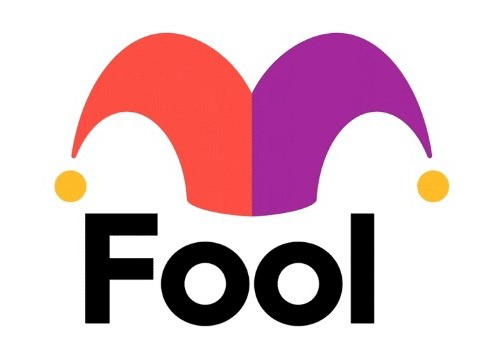Key Points
-
Investing in a 401(k) is an incredibly powerful way to save for retirement.
-
While everyone’s savings goals are different, it can be helpful to see how your account balance compares to the average.
-
If you’re falling behind, there’s one simple way to potentially boost your savings by hundreds of thousands of dollars.
If you have access to a 401(k) and are regularly contributing, you’re already ahead of the game when it comes to retirement planning. A 401(k) is one of the most powerful retirement tools out there, and it can help supercharge your savings.
When planning for retirement, everyone’s journey will be different. Your savings goals will depend on many factors, such as the cost of living in your area, the number of years you expect to spend in retirement, and the type of lifestyle you want to enjoy. Your savings might look wildly different from others your age, and that’s OK.
Where to invest $1,000 right now? Our analyst team just revealed what they believe are the 10 best stocks to buy right now. Learn More »
That said, it can sometimes be helpful to see what the average American has stashed in their retirement fund. Here’s what the most recent data from Vanguard shows, as well as one simple way to increase your savings.

Image source: Getty Images.
The average 401(k) balance by age
Every year, Vanguard releases its “How America Saves” report detailing saving habits among Vanguard 401(k) participants. While these figures only account for Vanguard account holders — not the general population — they can be helpful to get an idea of where many Americans stand on savings.
The most recent report, released in 2025 and based on last year’s data, reveals that the average 401(k) balance among all Vanguard participants is $148,153. The median, though, is just $38,176. Because extremely high-earning outliers may skew the average, the median is often a more accurate representation of the typical person.
Broken down by age range, though, the average and median figures differ substantially from the overall average:
| Age Range | Average 401(k) Balance | Median 401(k) Balance |
|---|---|---|
| Under 25 | $6,899 | $1,948 |
| 25 to 34 | $42,640 | $16,255 |
| 35 to 44 | $103,552 | $39,958 |
| 45 to 54 | $188,643 | $67,796 |
| 55 to 64 | $271,320 | $95,642 |
| 65 and older | $299,442 | $95,425 |
Data source: Vanguard.
Again, your individual savings goals will depend on your situation. So if your 401(k) balance doesn’t match up with the average American’s, that doesn’t necessarily mean you’re off track.
Rather than relying solely on comparing your balance to the average, it’s wise to talk to a retirement planning expert or run your information through a retirement calculator for a savings estimate. These tools can give you a rough idea of how much you should aim to save based on your unique situation.
The simplest way to boost your 401(k) savings
One of the best ways to save more in your 401(k) is to take full advantage of the employer match, if your plan offers one. A whopping 86% of Vanguard 401(k) plans offer some type of matching contributions, according to the report, which could boost your savings by thousands of dollars per year with practically zero effort on your part.
For example, the median annual income among U.S. workers in 2024 was around $60,000 per year, according to the Bureau of Labor Statistics. Say you’re earning $60,000 per year and your employer will match 100% of your contributions up to 3% of your salary — or $1,800 per year.
Let’s also say that, right now, you’re only contributing $1,500 per year while earning the same amount in matching contributions. If you’re earning an 8% average annual return on your investments, here’s approximately how much more you could earn by increasing your savings to $1,800 per year and earning the full match:
| Number of Years | Total Savings: Investing $1,500 per Year + $1,500 Company Match | Total Savings: Investing $1,800 per Year + $1,800 Company Match |
|---|---|---|
| 20 | $137,000 | $165,000 |
| 25 | $219,000 | $263,000 |
| 30 | $340,000 | $408,000 |
| 35 | $517,000 | $620,000 |
| 40 | $777,000 | $933,000 |
Data source: author’s calculations via investor.gov.
In other words, contributing just $300 more per year — or $25 per month — to earn the full employer match could increase your total savings by more than $150,000 over a career. The company match is essentially free money, and taking full advantage of it can transform your retirement savings.
Investing in your 401(k) is one of the most effective ways to save for retirement, and no matter how your balance compares to others, small steps can go a long way. By contributing consistently and taking advantage of perks like the company match, you can boost your savings by hundreds of thousands of dollars over time.
The $23,760 Social Security bonus most retirees completely overlook
If you’re like most Americans, you’re a few years (or more) behind on your retirement savings. But a handful of little-known “Social Security secrets” could help ensure a boost in your retirement income.
One easy trick could pay you as much as $23,760 more… each year! Once you learn how to maximize your Social Security benefits, we think you could retire confidently with the peace of mind we’re all after. Join Stock Advisor to learn more about these strategies.
View the “Social Security secrets” »
The Motley Fool has a disclosure policy.
 marketbeat.com
marketbeat.com fool.com
fool.com benzinga.com
benzinga.com



